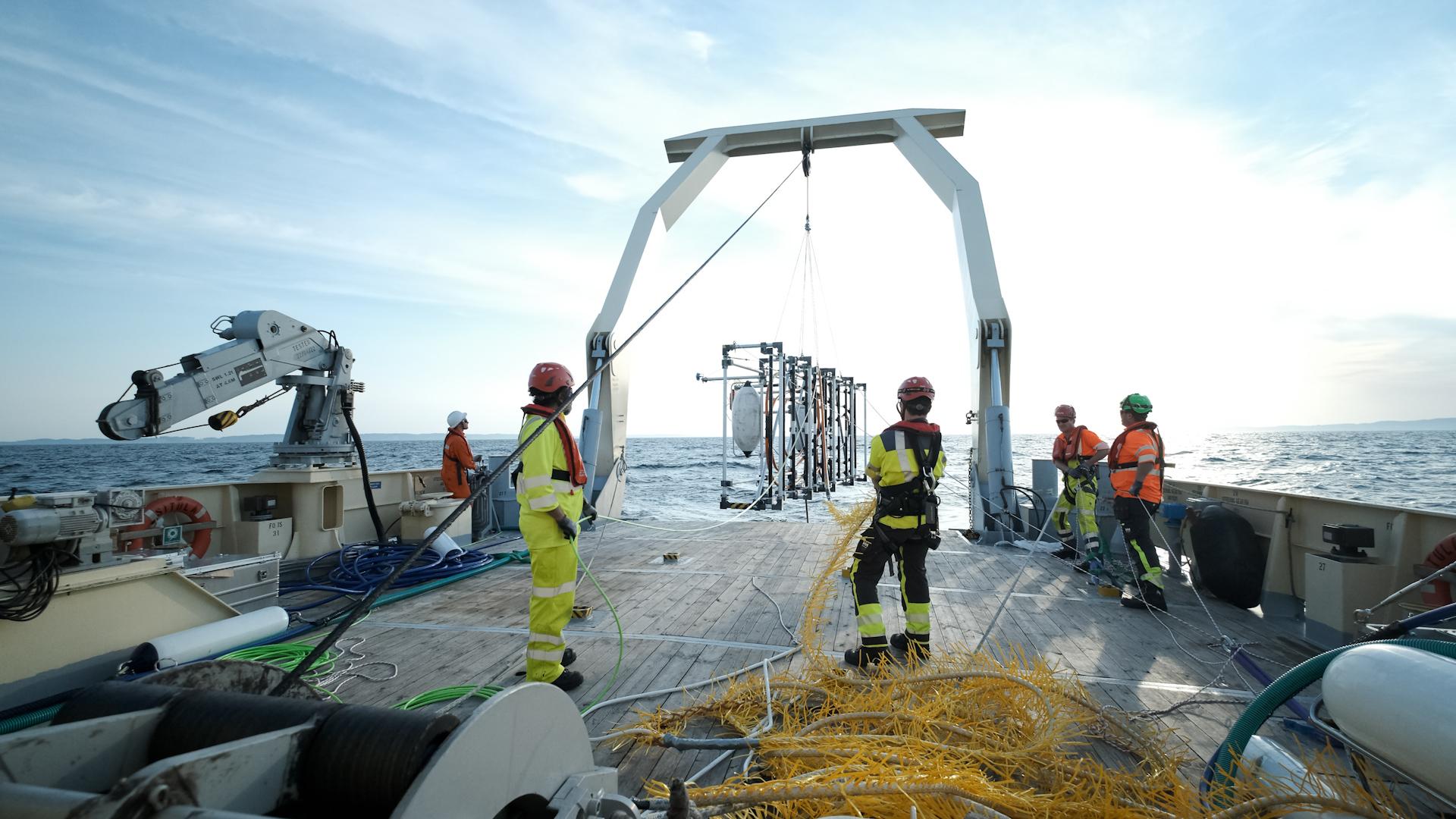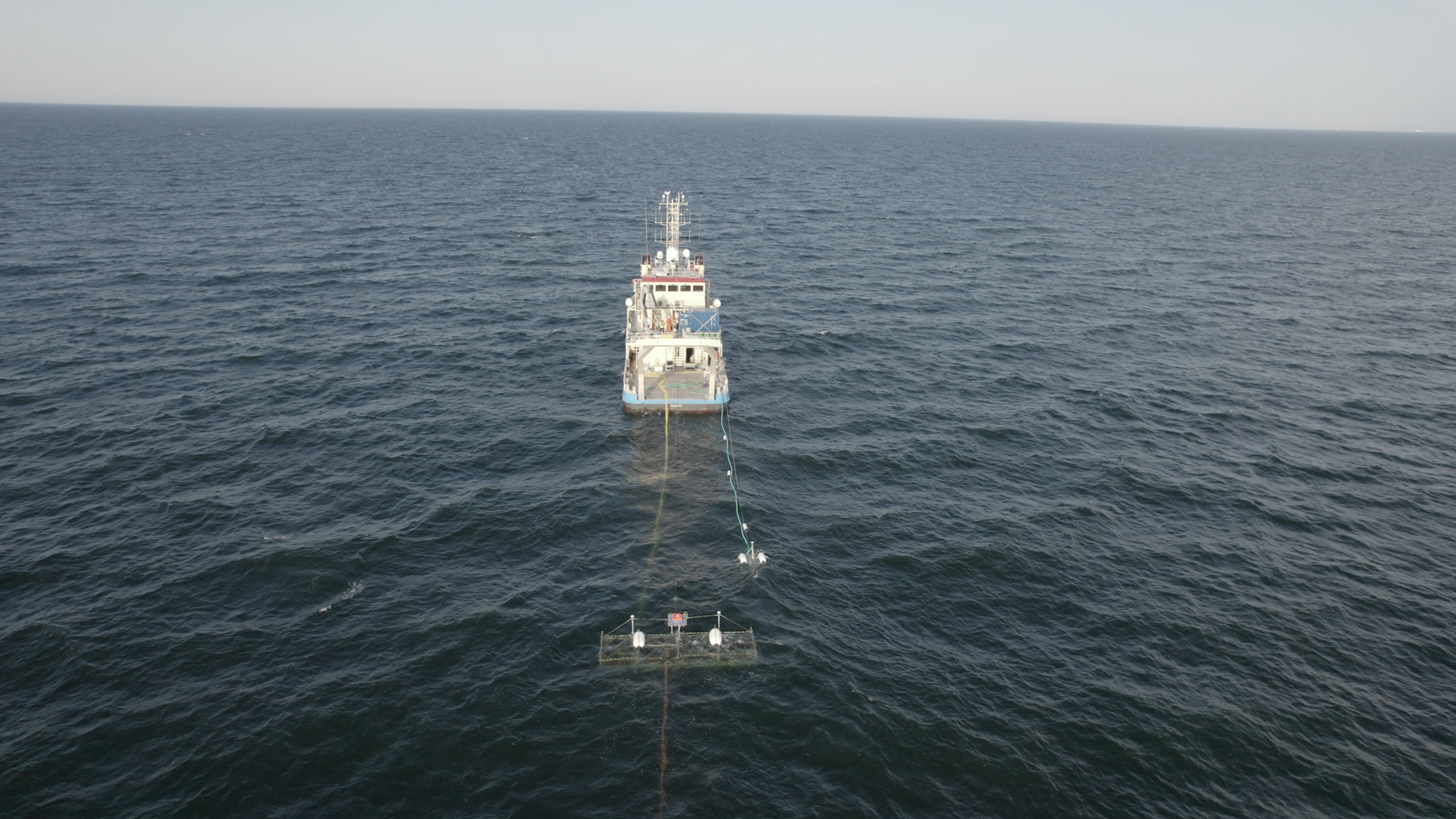IWES offshore: Boulder detection for monopile foundations and submarine cables in the Baltic Sea for Baltic Power Offshore Wind Farm
Bremen/Gdynia, Poland, March 2024 – The Fraunhofer Institute for Wind Energy Systems IWES has conducted a boulder detection campaign in the Baltic Sea on behalf of Baltic Power for the foundations of the planned wind turbines. It also applied the surveying technology along the planned subsea cable routes for the very first time. The innovative measuring system allows not only the detection of boulders located up to 100 meters below the seafloor but also the surveying of shallower objects along cable corridors. This technology developed by Fraunhofer IWES makes it possible to minimize risks posed by boulders during the installation of wind turbines, offshore substations (OSS), and cables.


Baltic Power, a joint venture project between ORLEN and Northland Power, is planning to install an offshore wind farm in the Baltic Sea with a cumulative total capacity of up to 1.2 gigawatts. The farm will comprise 76 wind turbines and two offshore substations (OSS). The respective sites of the infrastructure need to be selected with care and the subsoil investigated with the greatest accuracy, as boulders in the area can pose risks during the installation process. The cable corridors also need to be surveyed accurately to ensure that the subsea cables can be installed optimally and with the lowest risks. The cables connect the wind turbines to the OSS and these, in turn, to the power lines on land. Boulder fields are detected for this purpose. The project got underway in January 2023, and the IWES project team successfully completed the required offshore data acquisition in summer 2023, which was followed by the data processing and interpretation.
Detecting boulders with the innovative measuring system
The innovative measuring system allows the scientists at Fraunhofer IWES to locate boulders at depths of up to 100 meters below the seafloor. The technology comprises a towed array equipped with special seismic sensors (hydrophones) and positioning systems. During the acquisition, the hydrophones pick up the sound waves emitted by a signal source and reflected or diffracted by the subsoil. This makes it possible not only to map the sediment layers but also to detect rocks in the sub-seafloor. The unique method of diffraction imaging allows tracing of the acoustic energy diffracted by the boulders to its point of origin. Thanks to the measuring system, risks arising from rocks and other objects buried in the surveyed seafloor sediments can thus be determined and mitigated.
Surveying of subsea cable corridors
The IWES team also surveyed subsea cable corridors with the technology for the very first time. For the customer, detection of boulders along the cable routes is equally important. For this purpose, it is necessary to investigate how many potential rocks are located in the immediate vicinity of the planned corridors in the subsurface and determine the locations of boulder fields. The cable-laying ships can then lay the power cables along the previously explored corridors while avoiding the detected boulders.
Piotr Ostrowski, Baltic Power Deputy Project Director, said: »Baltic Power selected Fraunhofer IWES based on its innovative technology with a proven track record. Fraunhofer IWES’ methodological expertise ensures not only the accurate recording of geological structures and boulders, but also the reduction of risks and significant cost savings. The utilization of advanced seismic technologies is of great importance for future-proof and sustainable energy projects in the offshore wind industry, particularly in complex sites such as the Baltic Sea.«
»We are proud to be able to help the renewable industry implement wind farm projects faster and in a more efficient manner, thereby minimizing risks. Our research work and successfully completed industry projects continue to validate our method, and we also satisfy industry requirements more comprehensively. This motivates us to further improve our seismic measurement methods, and we look forward to applying our expertise in further projects,« added project coordinator Gino Frielinghaus, Head of Department Sub-Surface Investigations at Fraunhofer IWES.
The experience and findings from this project will serve as the basis for the planning and installation of offshore wind farms in the future and help to optimize the methods even further.
---
Contact person at the Fraunhofer Institute for Wind Energy Systems IWES
Project coordination, Gino Frielinghaus, Head of Department Sub-Surface Investigations
Tel.: +49 (0)471 14290-174
E-mail: gino.frielinghaus@iwes.fraunhofer.de
www.iwes.fraunhofer.de
---
Fraunhofer IWES
Fraunhofer IWES secures investments in technological developments through validation, shortens innovation cycles, accelerates certification procedures, and increases planning accuracy by means of innovative measurement methods in the wind energy and hydrogen technology sectors. There are currently more than 300 scientists and employees as well as more than 100 students employed at nine locations: Bochum, Bremen, Bremerhaven, Görlitz, Hamburg, Hannover, Leer, Leuna, and Oldenburg.
Baltic Power
Baltic Power, a joint venture between ORLEN and Northland Power, represents a landmark project in Poland’s shift towards renewable energy. As the most advanced offshore wind investment in the Polish Baltic Sea region, the project is set to contribute significantly to the country’s energy transition. With a total investment of approximately €4.4 billion, financed by 25 financial institutions, Baltic Power stands as the largest externally financed project in Polish history. The project, which will see the installation of 76 wind turbines, is expected to generate nearly 1.2 GW of power by 2026, enough to supply 1.5 million households with clean energy.
---
Modification on March 06, 2025: Name of the measuring system has been changed.
Last modified: